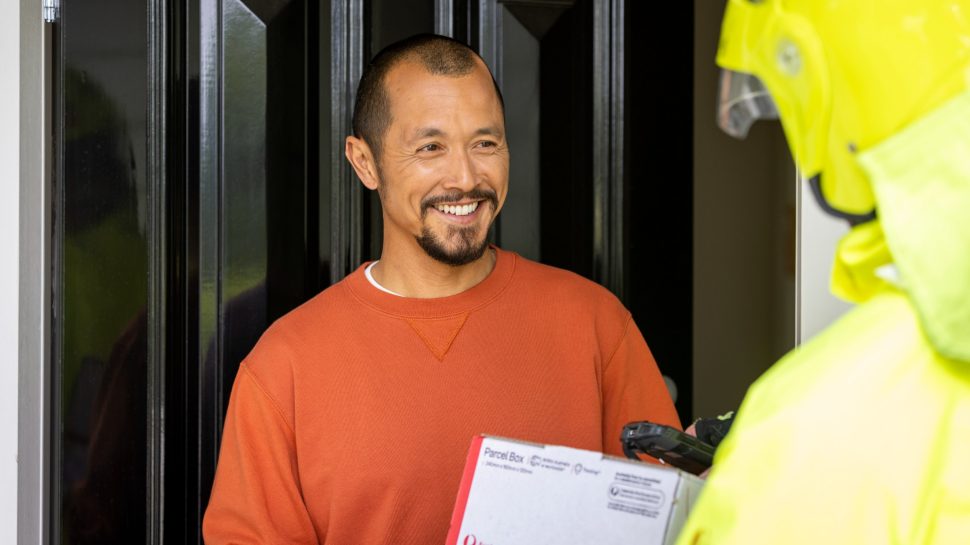How to conduct a supply chain review after peak season to optimise for future success
Reviewing your supply chain, logistics, feedback and goals after peak season will help you improve for the next peak. We explore what questions to ask to help you optimise results.

Key points
- Australian Cyber Weekend sales jumped 4.7% year on year.
- Conducting a post-peak review will help you analyse this busy period and optimise for the future.
- By auditing your supply chain, logistics management and customer feedback, you’ll be able to identify areas for improvement.
The peak that was: how eCommerce performed in 2023
Aussies got clicking during Cyber Weekend, with 5.2 million Australian households making an online purchase during November and December’s cyber sales - a jump of 400,000 on the previous year.
Despite a relative flattening outside of sale months, the total number of online purchases made during the extended Cyber sales period (from 20 November to 3 December) jumped by close to 5% year-on-year1.
With so much eCommerce activity focused during one peak period, it’s important to get it right. As a business owner or eCommerce manager, you might still be catching your breath after a huge peak season - but to improve, you’ll need to take the time to look back at what worked and what didn’t during peak.
One way to capture this is by conducting a post-peak check-in. This process can help you review your supply chain, manage logistics and optimise your store for the next big sale – with Afterpay Day, Click Frenzy Travel and Easter sales right around the corner!
Supply chain review
The first step in conducting a post-peak check-in is to review your supply chain. This involves taking a close look at your processes and identifying areas for improvement. Here are some tips for conducting a supply chain review:
- Identify your key suppliers and review their performance during peak season. Did they perform as expected or were there any unexpected disruptions to your supply chain?
- Compare your forecast to inventory levels and identify areas where you were over or under-stocked. Correcting this can help improve your business cash flow, reduce waste and even free up valuable warehouse space.
- Review your order fulfillment process and identify any bottlenecks or inefficiencies.
- Put supply chain modelling into place, such as creating a digital twin to assess different risks and build a stronger supply chain ahead of the next peak season.
By conducting a thorough supply chain review, you can identify areas for improvement and make changes to optimise your processes for the future.

Logistics management
This is another important aspect of your post-peak check-in. Effective logistics management can help you improve your order fulfillment process, reduce costs and improve customer satisfaction. Here are some things to consider as part of your audit:
- Can you use data to optimise your shipping and fulfilment strategies? For example, if majority of your orders are being sent to another state, could you investigate a 3PL or omnichannel fulfilment model?
- If you don’t already have one in place, implement a warehouse management system to improve inventory accuracy and reduce disappointing customers by running out of stock or placing them on back-order.
- Integrate your eCommerce store with a shipping platform to automate things like label printing and manifesting, to save time and reduce errors.
Conduct a delivery experience health check
A great delivery experience leaves customers feeling good about their purchase and gives them the confidence to shop with you again. Things like fulfilling orders in the timeframe you promise and offering simple parcel tracking or multiple delivery options all contribute.
Consider these different elements of your customers’ delivery experience at peak:
- Analyse customer service contacts and determine the main categories these queries fall into. Then find a way to address them.
- For example, if majority of customers are chasing up tracking details, capturing their email and number at checkout and sharing it with Australia Post will ensure we can update them on the delivery. And promoting the AusPost app to your customers will allow them to track their own parcels, without the need to contact you at all.
- To reduce carding and improve first time delivery, consider enabling safe drop for eligible parcels or integrating collection points into your checkout. This will allow shoppers – such as those who won’t be home to accept a parcel or live in an apartment - to select an alternative delivery location that’s secure and convenient. This might be a free Parcel Locker near home or a Post Office close to their work, allowing them to collect items during business hours.
If you have an Australia Post Account Manager, reach out and ask for a report on your peak performance to determine any areas for improvement. They’ll be able to look at how you’re sorting parcels, if you have manifested on time and even set targets to help you improve.

Questions to ask during a post-peak check in
First, ensure you have the right people in the room to cover all perspectives and aspects of your business. Set up time with your buying, digital, customer service, IT, marketing, finance and warehouse teams to review your peak performance.
Here are some thought-starters for the type of questions you should be asking during your review:
- What were the top challenges you faced during peak?
- Were your marketing strategies successful?
- Did you experience any over or understocks during peak season?
- Were you able to fulfill orders on time and meet your customers’ expectations?
- Did you experience any bottlenecks in your order fulfillment process?
- Did you receive any feedback from customers about their experience with your business during peak season?
- How did you measure success? And can you use these metrics to create more specific targets for the next peak?
- What goals can you set for the future?
By asking these questions, you can identify areas for improvement and make changes before the next peak season rolls around.
Ways to optimise for the future
Now it’s time to apply your learnings and insights from peak season to improve and enhance your performance for the next peak, and beyond. Here are some further things to consider:
- Use data to forecast demand and plan your inventory levels accordingly.
- Implement a continuous improvement process to identify and address inefficiencies in your supply chain.
- Use automation, APIs or artificial intelligence to streamline your order fulfillment process, reduce errors or complete some of your basic business functions.
- Monitor your logistics performance and identify areas for improvement.
Conducting a post-peak check-in is an important step in ensuring that you’re continuing to improve as a business and set you up for future success during the retail rush.
For more insights into peak season, read our latest exclusive insights for a full wrap of eCommerce in the lead up to Christmas.
Selling online? We’re making eCommerce easy
Selling online? We’re making eCommerce easy
Learn how MyPost Business can help you save time and money on parcel sending.
You may also like
1 Inside Australian Online Shopping update, January 2024



